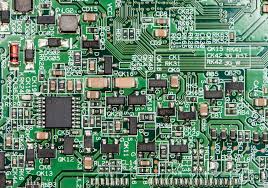What are Power Supply PCBs for Power Converters?
Electronic device powering is made simple and cost-effective with the help of power supply PCB for power converters. Power supply PCBs has higher efficiency, quicker switching times, and superior thermal performance than conventional power supplies. To achieve optimum performance, the PCB must be built to withstand the heat produced by the power converter, and the components must be strategically positioned and routed.
The beneficial aspects of Power supply PCB for Power converters:
Power supply PCBs (Printed Circuit Boards) are essential for power converters because they offer several advantages that improve the performance and dependability of the entire system.
-
Compressed Design:
Power Supply PCB for Power Converters enable the creation of space-saving, portable power converters. The overall size of the power converter may be greatly decreased by merging multiple components, including transformers, capacitors, and power semiconductors, onto a single PCB, making it perfect for applications with limited space.
-
Improved Thermal Management:
The lifetime and dependability of power converters depend on the effective dissipation of the heat produced during operation. Power supply PCBs can be built with certain thermal management strategies, such as heat sinks and copper pours, to maximize heat dissipation and maintain lower operating temperatures. As a result, the converter functions within safe temperature ranges and is kept from overheating.
-
Enhanced Electromagnetic Interference (EMI) Performance:
Power converters can produce electromagnetic interference that can interfere with nearby electronic equipment. This is known as enhanced electromagnetic interference (EMI) performance. Power supply PCBs can be constructed using the necessary grounding and shielding procedures to reduce EMI emissions. Power supply PCBs assist in minimizing the effects of EMI on the entire system and guarantee electromagnetic compatibility (EMC) standards compliance by carefully routing power and signal lines and including EMI filters on the PCB.
-
Reduced Parasitic Effects:
Reduced parasitic effects Power converter performance can be adversely affected by parasitic effects. These effects can be reduced by carefully planning the power supply PCB layout and selecting the best location for each component. This enhances the power converter’s overall performance, stability, and efficiency.
-
Ease of Manufacturing and Assembly
Manufacturing and assembly procedures are simplified using power supply PCBs, which is a benefit. Cost-effective mass production is made possible by the use of standardized PCB manufacturing processes. Additionally, automated assembly methods may be used to install components directly onto the PCB, minimizing the need for manual labor and guaranteeing high quality.
Uses of Power Supply PCB for Power Converters
-
Medical Devices:
Power converters are essential medical devices, including anything from patient monitoring systems to diagnostic tools and surgical instruments. It delivers accurate and controlled power to various devices; power supply PCBs are used. Various PCBs frequently incorporate isolation measures to assure patient safety and adherence to medical standards.
-
Industrial Power Systems:
Power converters are widely employed in industrial power systems to convert alternating current to DC. These systems frequently need high-power, accurate, efficient, and controlled conversion. Industrial power converters use power supply PCBs to provide the necessary power regulation, protective features, and control circuitry.






